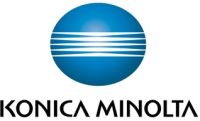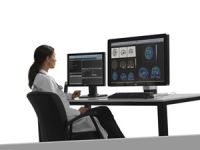A range of online resources launched to enhance teaching and learning around core healthcare topics
New tools designed to introduce young people to the technology behind a range of life-changing medical devices
Siemens Healthcare has launched a range of online educational healthcare resources to introduce medical technology to those aged between seven and 16. The tools include an introduction to MRI, X-ray, fluoroscopy and ultrasound, the way they are used to help patients and an explanation of the technology behind them.
According to Health Education England initiatives, there are more staff in the NHS aged over 65 than under 25 demonstrating a need for young people to be given access to the professions and greater engagement with schools and colleges*. Siemens‘ resources support an ever-increasing focus within schools on science, technology, engineering and maths (STEM) subjects and are also suitable for use within clinical environments such as by hospital-based play specialists.
The tools, designed to enhance teaching and learning when exploring healthcare topics, incorporate a range of engaging activities. A cut-out MRI scanner is available to print out as a creative tool to introduce young people to imaging technology, and alleviate potential fears prior to the imaging process. The unique downloadable MRI Scan App provides a 360o virtual MRI scan experience and enables users to simulate scanning items, find out more about the steps from referral to results, and find out about the technology and processes behind it.
“Siemens is committed to raising the aspirations of young people within STEM fields and has built on the tools available within healthcare topics. As a global technology powerhouse, Siemens is well placed to help enrich and enhance schools, hospitals and homes across the UK with a range of free educational resources,” states Laura Bennett, PR and Government Affairs Manager at Siemens plc.
The resources available also include the ‘A Peep Inside’ task that allows young people to develop an understanding of the relationship between the properties of electromagnetic waves and their uses within medical equipment. The ‘Inside the Human Body’ activity lets children to observe some of the systems within the body and incorporates engaging games and quizzes to test their anatomy and nutrition knowledge. The ‘Medical Magnets’ section enables young individuals to understand how engineers apply knowledge of physics and magnetics to develop MRI scanners.
Laura Bennett adds, “The new tools, available on the Siemens Education Portal, aim to inspire and support the younger generation, from students to patients who might come across imaging equipment in their hospital visit. We hope to excite, inspire curiosity and create enthusiasm, nurturing an interest in the wide range of professions the healthcare industry has to offer.”
Siemens Healthcare is one of the world's largest suppliers to the healthcare industry and a trendsetter in medical imaging, laboratory diagnostics, medical information technology and hearing aids. Siemens offers its customers products and solutions for the entire range of patient care from a single source – from prevention and early detection to diagnosis, and on to treatment and aftercare. By optimising clinical workflows for the most common diseases, Siemens also makes healthcare faster, better and more cost-effective. Siemens Healthcare employs some 52,000 employees worldwide and operates around the world www.siemens.co.uk/healthcare.
Source & Image Credit: Siemens Healthcare


























